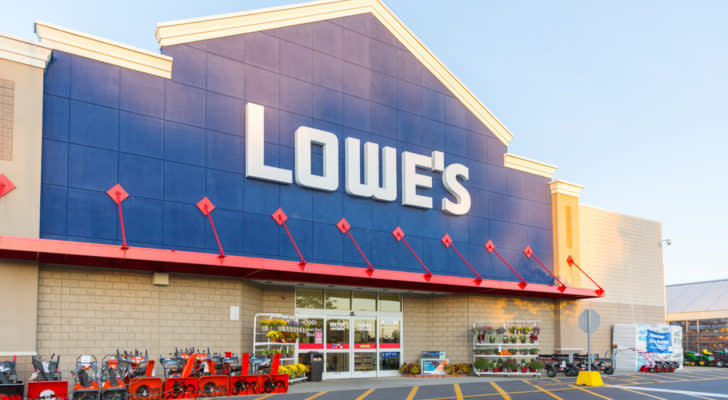7 Dividend Aristocrats That Have Raised Their Payouts for 25 Years or More
In recent years, dividend aristocrats have become a popular choice among investors of all stripes. Dividend aristocrats, or S&P 500 index components with at least 25 consecutive years of dividend growth, have historically delivered total returns on par with the S&P 500 but with lower volatility.
If you want to invest in all the stocks in this category, it’s pretty easy. All you need to do is buy the ProShares S&P 500 Dividend Aristocrats ETF (BATS:NOBL), which owns all 67 of these “aristocrats” in near-equal amounts.
However, if you want to target even more substantial long-term total returns, selecting some of the highest-potential dividend aristocrat stocks may also be worth looking into.
InvestorPlace - Stock Market News, Stock Advice & Trading Tips
For instance, the seven dividend aristocrats listed below offer a solid mix of growth, value, and yield, making them strong candidates for your portfolio, whether your investing strategy is focused more on income or capital growth.
Automatic Data Processing (ADP)

Source: IgorGolovniov / Shutterstock
If yield and growth are your investing objectives, Automatic Data Processing (NASDAQ:ADP) is one of the top dividend stocks to buy. As you likely know, ADP is a leading payroll provider and related services to businesses.
With this steady, recession-resistant underlying business, it is no surprise that ADP stock has historically produced strong total returns for investors. Although past performance does not indicate future returns, as I argued last spring, this stock has a solid chance to continue producing above-average total returns.
Taking another look at the numbers, I reiterate this view. Sell-side forecasts call for earnings growth of around 10% in the coming years. Assuming shares keep climbing in tandem with earnings growth, coupled with the stock’s 2.03% forward dividend (which has grown by an average of 13.7% annually for the past five years), double-digit returns are likely within reach.
Albemarle (ALB)

Source: IgorGolovniov/Shutterstock.com
If capital growth is your focus, Albemarle (NYSE:ALB) is a dividend aristocrat to consider. Shares in this specialty chemicals company have one of the dividend aristocrats’ lowest forward yields (0.8%). Dividend growth over the past five years (averaging 3.95% annually) has also been modest.
However, due to the stock’s strong growth catalyst, this relatively low yield is more than made up for. Albemarle has high exposure to the current “lithium boom,” fueled by the auto industry’s big pivot towards producing electric vehicles (or EVs). Admittedly, a strong pullback in lithium prices has recently lowered ALB stock.
Yet based on the company’s latest quarterly results and guidance, it’s clear that demand and prices for lithium remain likely to keep rising. This points to more earnings growth, dividend growth, and higher prices ahead for ALB shares.
Cardinal Health (CAH)

Source: Shutterstock
Cardinal Health (NYSE:CAH) may be a more appealing choice for value-conscious investors. Shares in the healthcare distributor trade at a forward price-to-earnings (or P/E) ratio of around 16. This is slightly below the average P/E ratio (18.5) for the basket of dividend aristocrat names included in the NOBL portfolio.
While cheaper than average, CAH stock has a forward dividend yield (2.19%). That’s only slightly above the average yield among the aristocrats (1.89%). Dividend growth has also been lackluster in the past five years, averaging just 1.3% annually.
Still, with the prospect of double-digit earnings growth in the coming years (boosted by plans to repurchase up to $3.5 billion worth of shares), CAH (up by 51.5% over the past year) could keep rising due to increased earnings and perhaps, due a possible further expansion of its forward multiple.
Illinois Tool Works (ITW)

Source: Casimiro PT / Shutterstock.com
Illinois Tool Works (NYSE:ITW) is another of the dividend aristocrats with many years of dividend and earnings growth under its belt that is likely to continue delivering a similar level of performance.
The industrial conglomerate continues to increase its rate of payout steadily. Just last week, ITW raised its dividend by 7%. With this, ITW stock now has a forward annual dividend yield of 2.12%. While the current economic slowdown is expected to affect earnings this year, long-term earnings prospects for Illinois Tool Works remain promising.
Analyst forecasts call for 6% earnings growth in 2024 and more than 7% in 2025. This level of growth, plus ITW’s high-quality reputation, is likely sufficient for shares to maintain their forward multiple of around 25.3. Between shares rising in tandem with this earnings growth, plus the steady, growing dividend, ITW could continue producing solid total returns.
Lowe’s (LOW)

Source: Helen89 / Shutterstock.com
Not only does Lowe’s (NYSE:LOW) hold dividend aristocrat status. The home improvement retailer also holds dividend king status, with its more than 50-year track record of dividend growth.
That’s not the only thing that makes this stock appealing. LOW stock trades for around 16.7 times forward earnings. Lowes’ main rival, Home Depot (NYSE:HD), trades at a much higher valuation (21.8 times earnings). This big gap exists, despite Lowe’s having a higher level of expected earnings growth.
There may be doubts LOW can deliver such earnings growth, yet I believe it is attainable, primarily because of how aggressively the company is buying back shares. This will help to boost earnings per share. Delivering this level of growth may help bridge this valuation gap. Alongside returns stemming from LOW’s 1.97% dividend, this could mean strong returns ahead for investors buying the stock today.
NextEra Energy (NEE)

Source: Blue Planet Studio / Shutterstock.com
Rising interest rates have knocked utilities stocks lower, and NextEra Energy (NYSE:NEE) is no exception. However, suppose you’ve been looking to make this one of the dividend aristocrats in your portfolio. In that case, NEE’s selloff works to your advantage, and not only because interest rates aren’t set to stay high forever.
Due to NextEra’s higher exposure to the clean energy revolution than other utilities, NEE stock has long commanded a premium valuation. Yet with NEE’s pullback in price, you can buy it today for 22.2 times forward earnings. This may be a low valuation compared to the company’s growth potential.
As InvestorPlace’s John Blakenhorn recently argued, NextEra’s efforts in renewable energy and battery storage will likely continue to drive earnings growth. This points to further growth of NEE’s dividend (forward yield today of 2.7%) and solid price appreciation over a long time frame.
Realty Income (O)

Source: Shutterstock
Paying out dividends monthly since its founding 54 years ago, Realty Income (NYSE:O) has been one of the most consistent dividend stocks. Real estate investment trusts (or REITs), like utilities, have also been hammered by rising interest rates, but again, this may make now a great time to initiate a position in this stock.
Thus, buy O stock today and lock down a 5.18% dividend yield. While Realty Income has a long dividend track record, dividend growth hasn’t been exceptionally high (averaging around 3.73% annually) over the past five years.
Even so, don’t assume disappointing returns lie ahead for O shares. Besides a 5.18% (and gradually growing) yield, there’s also a strong chance this REIT will experience a big rebound in price once interest rates normalize. Considering this, snapping up O today could prove to be a profitable move in hindsight.
On the date of publication, Thomas Niel did not hold (either directly or indirectly) any positions in the securities mentioned in this article. The opinions expressed in this article are those of the writer, subject to the InvestorPlace.com Publishing Guidelines.
Thomas Niel, contributor for InvestorPlace.com, has been writing single-stock analysis for web-based publications since 2016.
More From InvestorPlace
The #1 AI Name for 2023 Could Be About to Ignite This $20.6 Trillion Wealth Shift
Musk’s “Project Omega” May Be Set to Mint New Millionaires. Here’s How to Get In.
The Rich Use This Income Secret (NOT Dividends) Far More Than Regular Investors
The post 7 Dividend Aristocrats That Have Raised Their Payouts for 25 Years or More appeared first on InvestorPlace.
